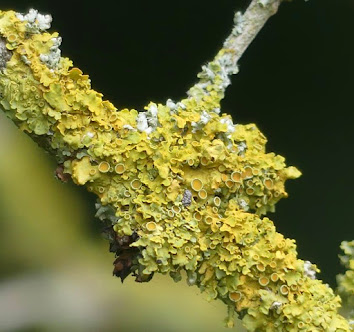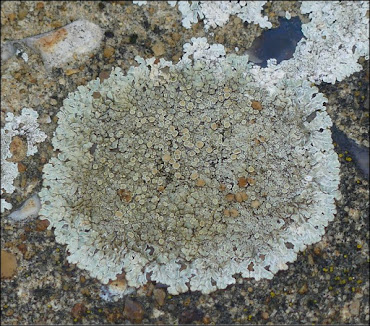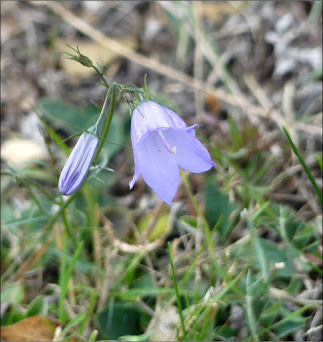Our 'On-Line Diary'... I'm responsible for the Words: my Friend, Myra, without whom none of this could or would have happened, the Pictures. All Wildlife Sightings are in the London Borough of Bexley unless otherwise stated...
Saturday 31 October 2020
The Wild Flower Society', Autumn Plant Hunt (for Plants found in flower during the last seven days of October viz. the 25th to 31st October inclusive)
We are undecided as whether to submit any Records: nevertheless, we will see what we can find.
Plant' Species found locally (in order of finding):
Sunday 25 October:
Ivy-Leaved Toadflax
Groundsel
Yarrow
Shepherd's-Purse
Red Dead-Nettle
Common Ragwort
Green Alkanet
Spear Thistle
Dwarf Mallow
Black Horehound
Lesser Calamint
Red Campion
Smooth Sow-Thistle
Lesser Burdock
Buddleia
Dandelion
Red Valerian
Perennial Wall Rocket
Oxford Ragwort
Common Mallow
Crown Vetch
Hoary Mustard
Common Knapweed
Oxeye Daisy
Common Toadflax
Bristly Oxtongue
Red Clover
Hedge Mustard
Pot Marigold
White Clover
Sweet Violet
Sand Lucerne/Medick
Narrow-Leaved Ragwort
Viper's-Bugloss
Hedgerow Crane's-Bill
White Dead-Nettle
White Ramping-Fumitory viz.
Herb Robert
White Campion
Common Field-Speedwell
Creeping Cinquefoil
Sea Aster
Jersey Cudweed
and Common Chickweed
Monday 26 October 2020
Dove's-Foot Crane's-Bill
Sowbread
Creeping Thistle
Round-Leaved Crane's-Bill
and Mouse-Ear Hawkweed
Tuesday 27 October 2020
Annual Wall Rocket
and Daisy
Sadly, it looks like we just missed out with Common Vetch viz.
So: fifty-one Species, in toto which is far more than we expected (we were hoping for circa thirty Species).
Sunday 25 October 2020
Lichens in Local Church Grounds
We looked upon the British Lichen Society' Records: Records have been submitted in respect of the following:
All Saints' Foots Cray (Sidcup): 31 Records for 8 April 2000 (also 37 Records during the period 21 February 1990 to 8 April 2000)
Erith Cemetery: 8 Records for 13 February 1995
St John the Baptist (Erith): 17 Records for 13 February 1995
St Paulinus (Crayford): 45 Records for 17 September 1992
Thursday 22 October 2020
Duck Island Cottage: St James's Park (the City of Westminster)
After visiting The London Library for the first time for a few months, we wandered over to the nearby St James's Park.
Duck Island Cottage, was built in 1841 for the St James's Park', Bird Keeper.
The Cottage contained a Club Room for the Ornithological Society of London. The Society had been established during 1837, to form and maintain a Collection of Birds, including Ducks, Geese, Swans, Grebes &c., in the Park.
As an aside, Charles II used to feed the Ducks in the Park and it was during his reign that the first Pelicans arrived: a present from the Russian Ambassador.
Wednesday 21 October 2020
Chemical Tests for Lichen
It was suggested during today's British Lichen Society', Zoom Meeting, that we think about conducting Chemical Testing to determine Lichen' identifications!!!!!
Starting with K (viz. Potassium Hydroxide) Testing: using Sodium Hydroxide in the form of Caustic Soda.
A Solution must be prepared, comprising 10% Caustic Soda and 90% Water: the Solution is then applied to a Lichen.
We are entering 'Big Brain' Territory!
And we haven't started to think about using a Microscope yet!
Monday 19 October 2020
Lichens on Bostall Heath (the Royal Borough of Greenwich)
That's not Xanthoria parietina we thought, on seeing a yellow Lichen growing on a Sweet Chestnut, in company with Punctelia subrudecta (the greenish Lichen) and a possible Flavoparmelia species (the greyish Lichen) viz.
Update: it has been suggested the Yellow Lichen might be Candelaria concolor.
Other Lichens found included:
And Xanthoria parietina growing on Hawthorn viz.
With what we think might be either Physcia ascendens and/or Physcia tenella mixed up in there.
Saturday 17 October 2020
The assumed Sowbreads are flowering on Bostall Heath (the Royal Borough of Greenwich)
With a Zoom Meeting scheduled for mid-Afternoon we didn't have time to stray too far, so went to Bostall Heath in search of Lichens &c.
On arrival we remembered the Sowbreads and found them flowering prettily viz.
Thursday 15 October 2020
To Woolwich and back via the Thames Path
We bicycled to Woolwich and returned Home via the Thames Path.
Wild Flower' Species (some still flowering) seen beside the Thames Path in front of the former Royal Arsenal, Woolwich, included:
Black Horehound
Black Nightshade
Borage
Bristly Oxtongue
Charlock
Common Mallow
Common Stork's-Bill
Creeping Thistle
Dove's-Foot Crane's-Bill
Fat Hen
Goat's-Rue
Groundsel
Hedge Mustard
Henbit Dead-Nettle
Mugwort
Narrow-Leaved Ragwort
Red Dead-Nettle
Redshank
Sea Beet
Sow-Thistle
Sun Spurge
Sun Spurge
White Clover
White Stonecrop
and Yarrow
We didn't see any aircraft flying into the London City Airport but did see a couple fly out.
Both Ferries were working: Dame Vera Lynn is seen here, mid-stream:
Back beside the Waste Incinerator we noticed quite a lot of White Ramping-Fumitory (mentioned in Kent Botany 2015): with some flowering viz.
Not long afterwards it started Raining.
Sunday 11 October 2020
To Erith Pier to look for Lichens &c. (Grid Reference: TQ5178)
In addition to seeing some Lichens we were pleased to see that the Jersey Cudweed, seen on previous visits, is still in-situ.
But we got a mighty surprise when we spotted assumed Wild Radish viz.
Wild Flower' Species seen on the Pier included:
Black Medick
Black Nightshade
Bristly Oxtongue
Common Chickweed
Common Chickweed
Dove's-Foot Crane's-Bill
Greater Willowherb
Jersey Cudweed
Jersey Cudweed
Prickly Lettuce
Shepherd's-Purse
Sow-Thistle
and Wild Radish (just the single Plant)
and Wild Radish (just the single Plant)
Lichens seen included:
Tuesday 6 October 2020
Kalahari Desert Air Mail ~ First Flight 1 November 1938
Johannesburg (South Africa) to Windhoek (South West Africa).
On 1 November 1938, South African Airways introduced a Second Air Mail Service to South West Africa. The Existing Route, from Johannesburg to Windhoek via Kimberly, Upington and Keetmanshoop, was supplemented by the new Weekly Service across the Kalahari Desert via Palapye, Maun and Gobabis.
Thursday 1 October 2020
Back to the Bexleyheath Cemetery
It has been a while since we last visited, so needing to visit the Shops in Bexleyheath, we went via the Bexleyheath Cemetery, in the vague hopes of finding a flowering Harebell. Which we did (just the single Plant but a Harebell nonetheless).
We were really rather surprised at the number of flowering Wild Flower' Species, which included:
Black Nightshade
Caucasian Stonecrop viz.
Harebell viz.
Herb Robert viz.
Ivy-Leaved Speedwell viz.
Lady's Bedstraw
Mouse-Ear Hawkweed
Mullein sp.
Pot Marigold
Purple Loosestrife viz.
Red Dead-Nettle
Reflexed Stonecrop
Selfheal viz.
and Yarrow
Additionally: we spotted two, Ice Plants, growing on a seemingly long untended Grave. A large Plant and a small Plant. Although it will be impossible to establish the Plant's 'Provenance', we will check with the Sedum Society to see if they could be Self-Seeded. The larger Plant is shown viz.
Subscribe to:
Posts (Atom)
































